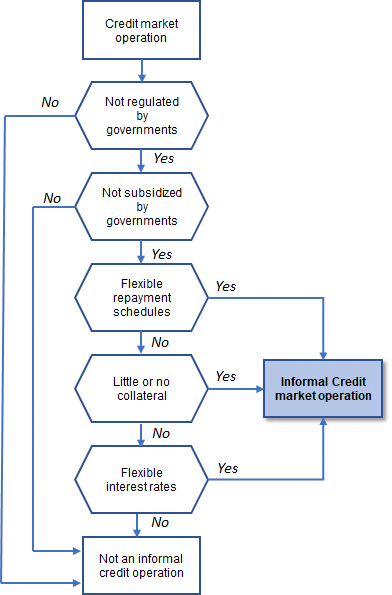The Identification of Informal Credit Suppliers

This is where the informal credit markets (ICM) move in. With advantages of unregulated money supply, easy accessibility, easy liquidity, low "administrative" and procedural costs, little or no collateral/mortgage requirements, flexibility in interest rates and repayment schedules, ICMs are ideally suited to cater to the lower income groups and informal sector's requirement of credit. There is, however, considerable overlap between the services offered by formal and informal credit operators. There are several cases where the advantages and conveniences of one type of supplier has been adopted by another. For example, banks have opened "pygmy" accounts to mobilize small daily savings from low income families or use commissioned agents for a door-to-door loan repayment collection. Informal credit operations are highly heterogeneous with a wide variety of operators and services, including information, lending and borrowing using a wide variety of debt instruments. The common element which runs through all of them is their "adaptability and flexibility of loan terms and conditions". This reduces their transaction costs and gives them comparative advantage and economic rationale over formal finance. The "informality" in informal finance is characterized by the following:
As a result of the above characteristics, flexibility dominates ICM operations which enables them to reach borrowers beyond the profitable reach of the formal sector with lower transaction costs. Based on the characteristics outlined above, the following flowchart helps to identify and define informal credit operations.

There are limitations to this chart, and improvements and/or changes are possible allowing for the flexibility which is essential in order to cover the wide range of informal credit operations and the considerable overlap between several formal and informal credit services. For qualifying as informal, a credit operation has to satisfy at least three of the criteria (in terms of their relative importance in defining "informality"): items one and two compulsorily and any one of the items three, four and five.
Several other criteria for informality, such as registration, area of operation, volume of
credit, etc. could be added for adapting this flowchart to credit operation in different
situations and locations.
Hari Srinivas - hsrinivas@gdrc.org |

